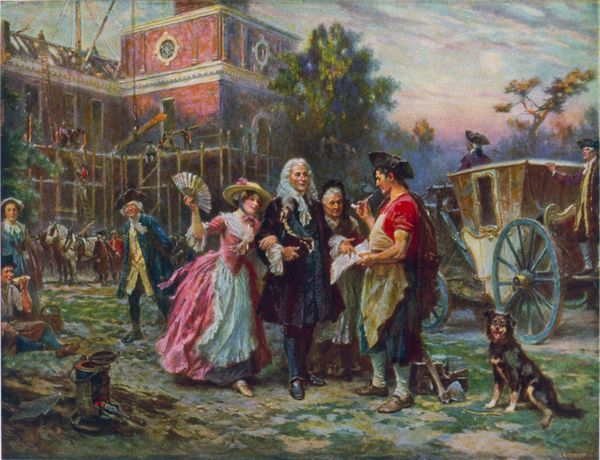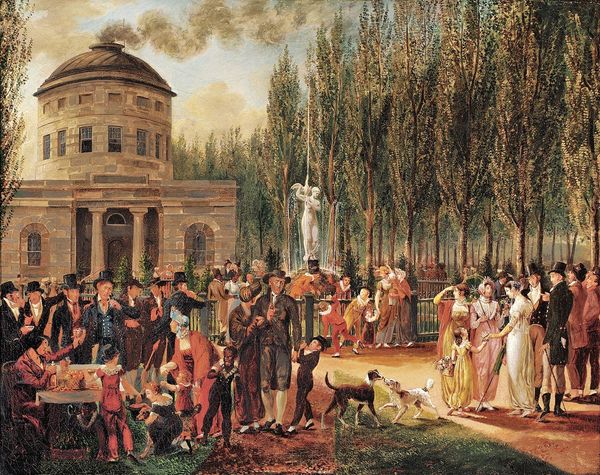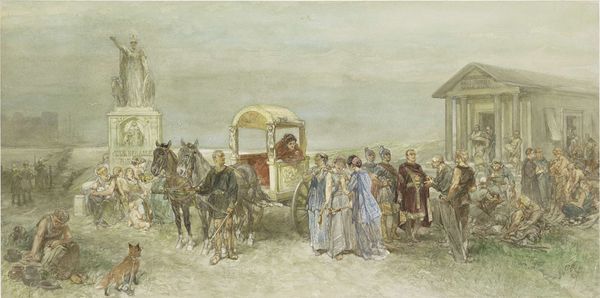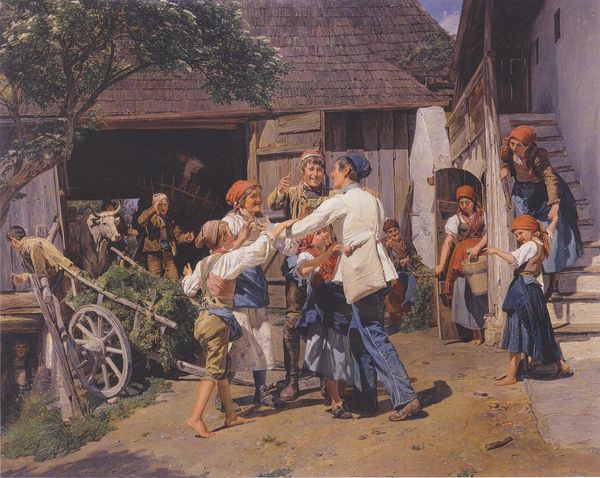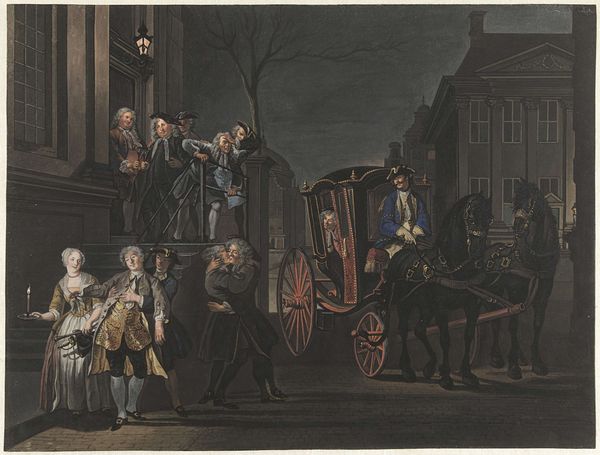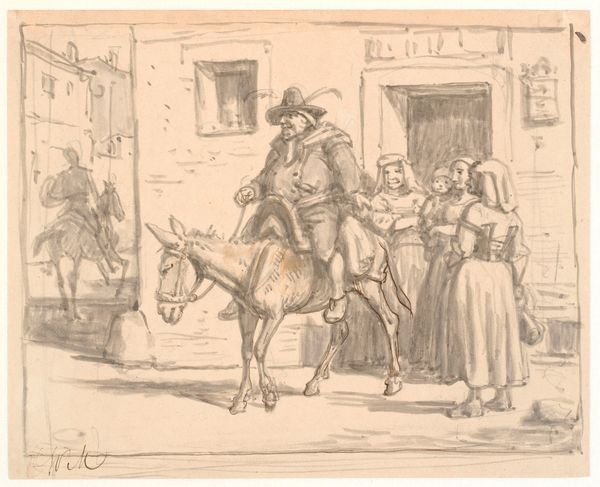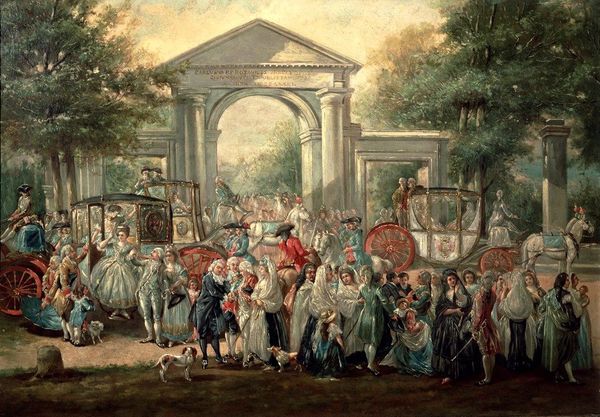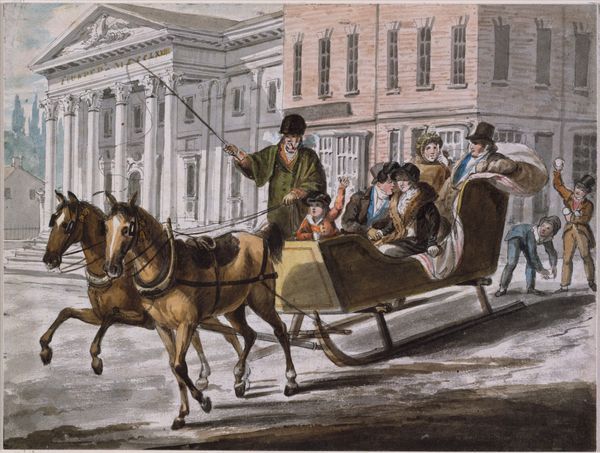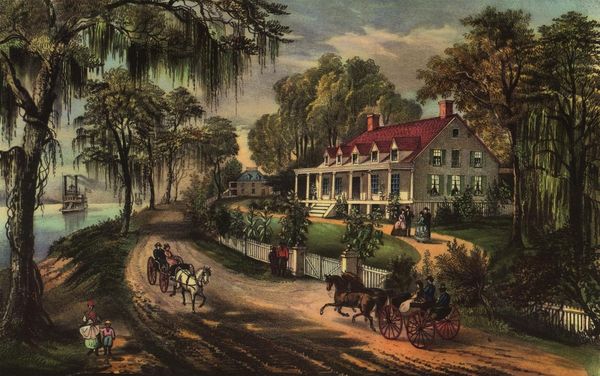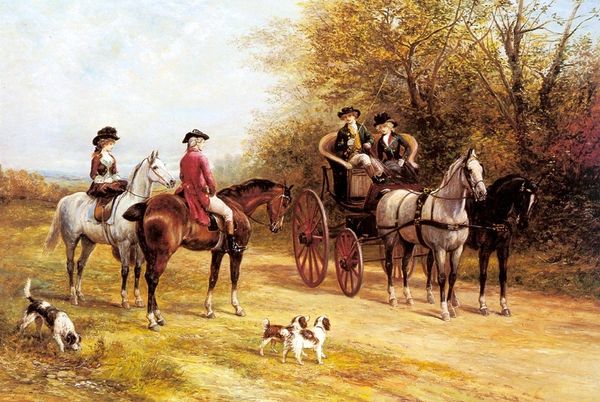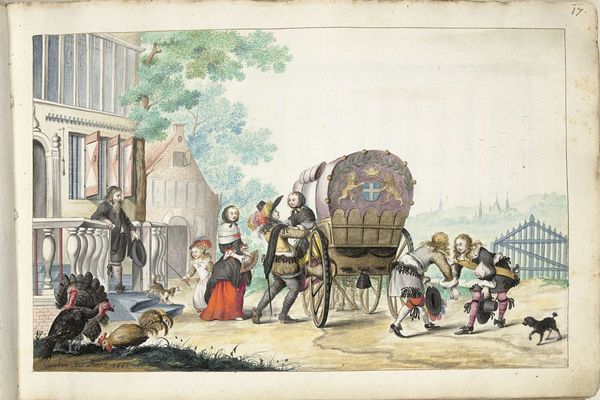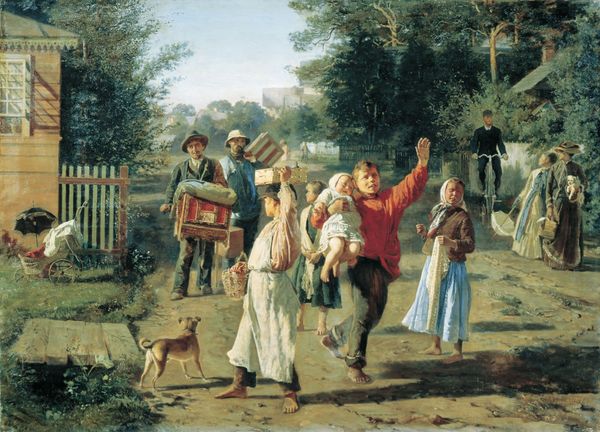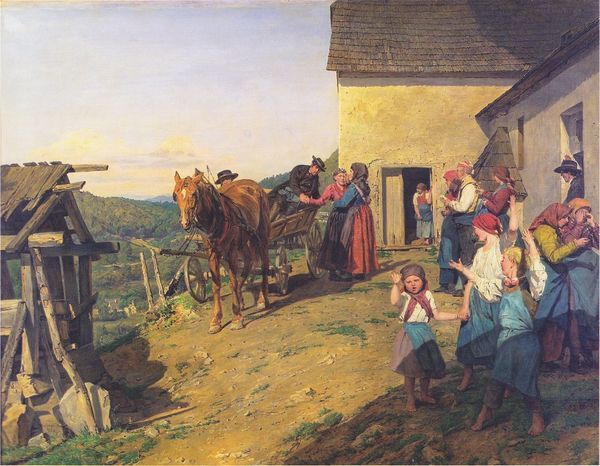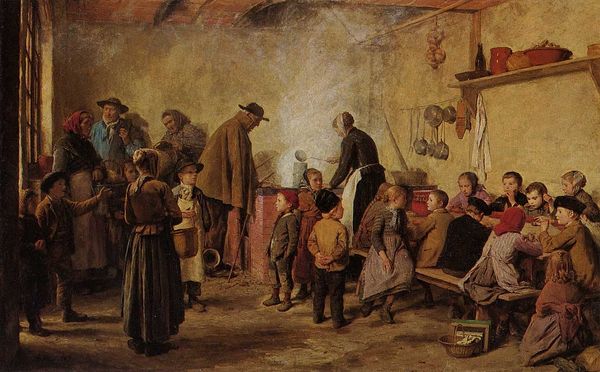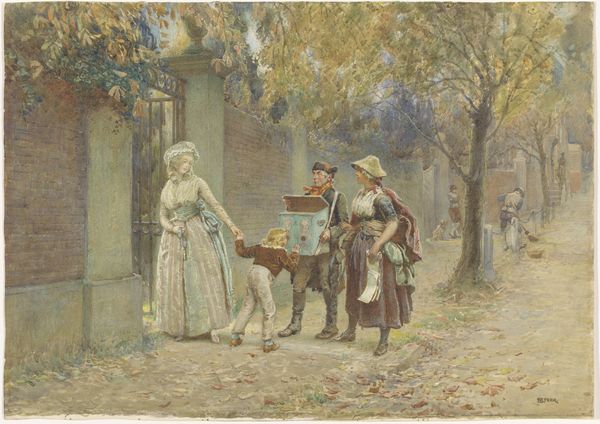
Copyright: Public domain
Curator: What strikes me immediately is the theatricality. Editor: Indeed. We're looking at Jean Leon Gerome Ferris's "General Washington at Christ Church, Easter Sunday, 1795," painted in 1908. It's a carefully staged history painting, rendered in oil paint, designed to evoke a specific narrative. Curator: The composition reinforces that narrative, doesn't it? Washington is the clear focal point, illuminated against the backdrop of the church. His figure occupies a central position in a pyramidal shape created by the other figures who flank and turn to him, leading the eye directly to him, underscoring his significance and emphasizing ideal leadership. Editor: Quite. And what intrigues me are the implied details of the work’s commission, its likely consumption via mass reproduction. The original may appear singular, but its impact depended on the material processes that replicated and distributed its message about civic virtue. Note, for example, how everyone's garments denote meticulous labor. Curator: I concede that, from a symbolic perspective, the garments and presentation do help craft the illusion of the time. What I can't move past, however, are the contrasting surfaces and textures that build a pictorial depth and lend this painting much of its allure. Observe how the horses pull this ornate gilded stage behind them. This painting could simply serve to immortalize General Washington as an upstanding individual for years to come. Editor: The sheen of the carriage does hint at a kind of nationalistic project through depictions of labor, wouldn't you agree? The artisan's craft is here juxtaposed with the more painterly strokes of trees that stand behind. There are subtle gradations of tone. One can wonder whether or not such detailing might serve to sanctify early America's more elite citizens to the exclusion of the many who remained poor during this era? Curator: A compelling idea! This approach casts "General Washington at Christ Church" in a dramatically different light than, say, one that dwells on the symbolic potential of the figures, architectural planes, or interplay between light and shadow alone. Editor: Indeed, a study of the painting's making draws focus to the ways history can often serve a certain narrative or ideal for future generations.
Comments
No comments
Be the first to comment and join the conversation on the ultimate creative platform.
